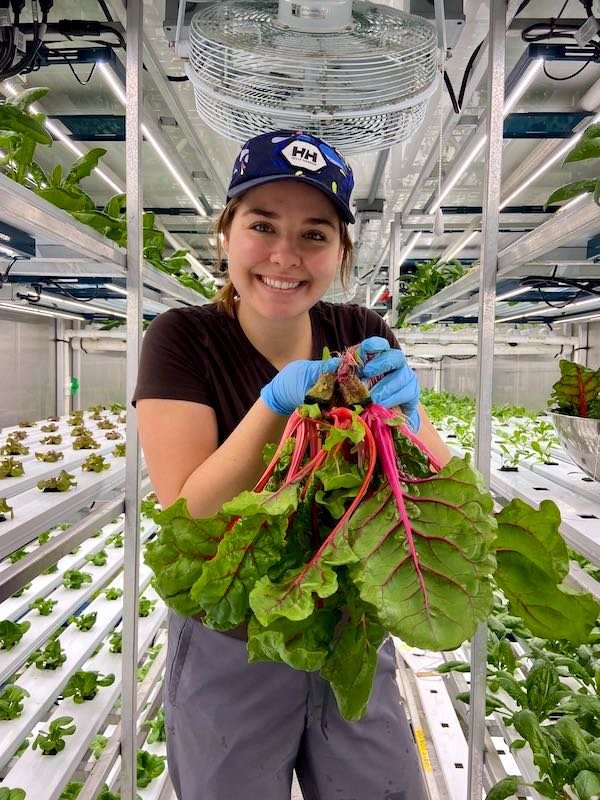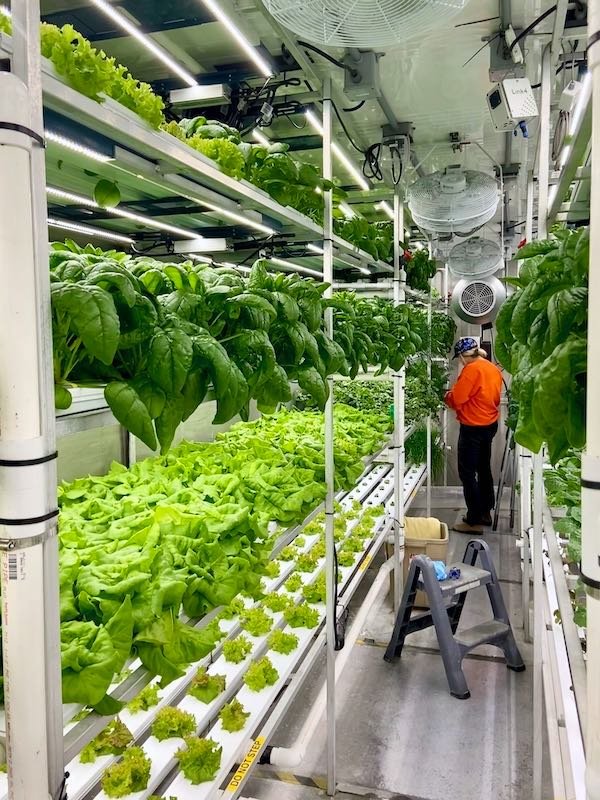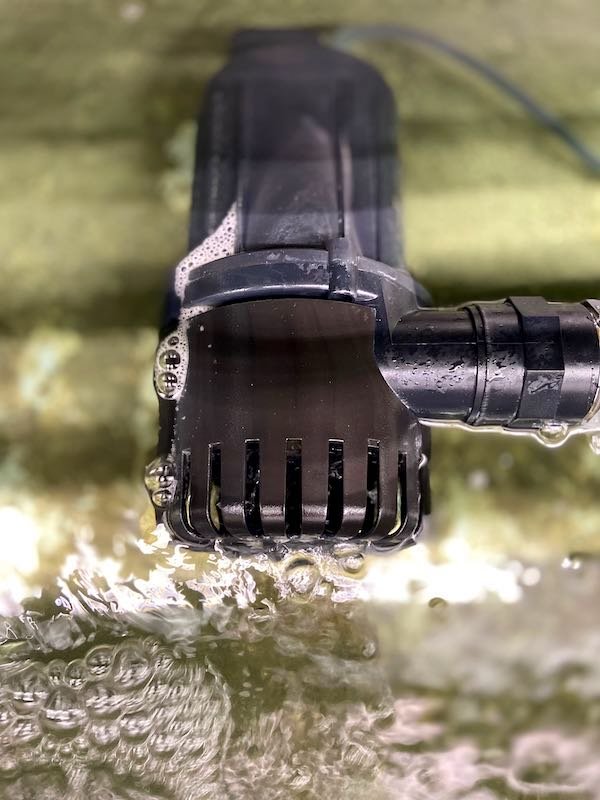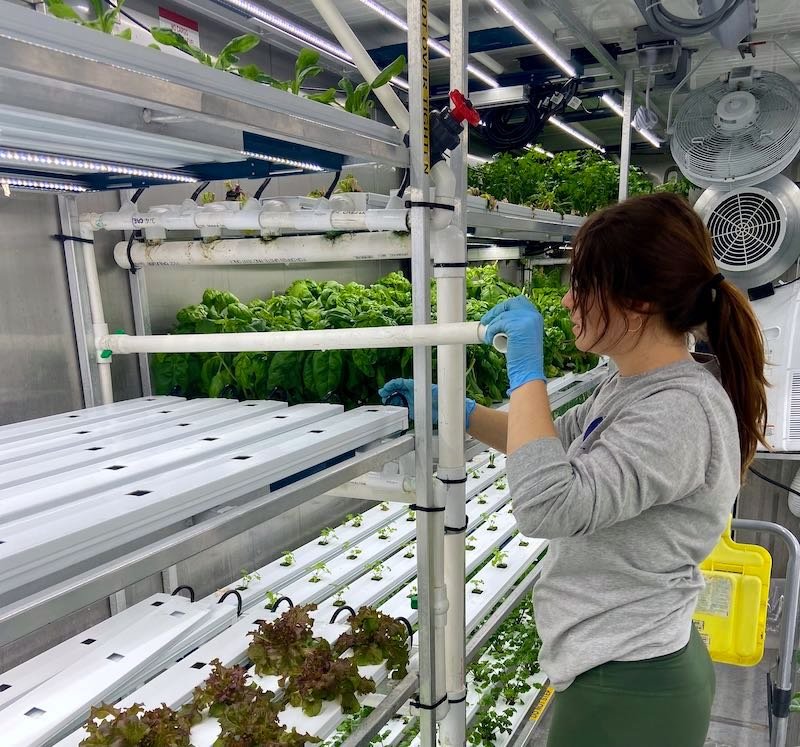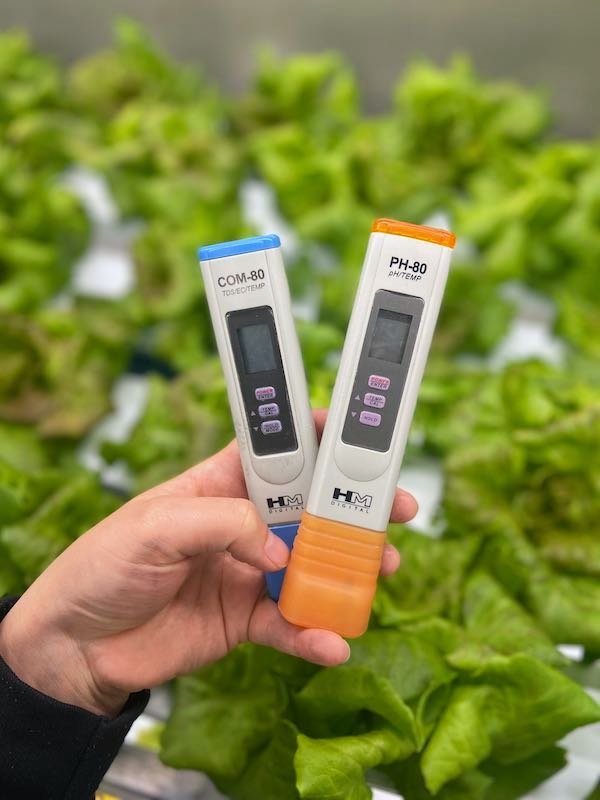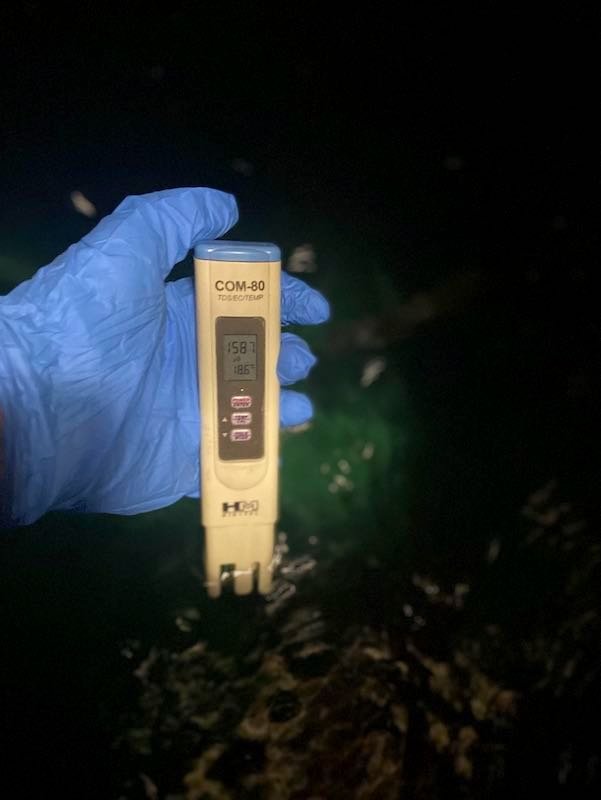Day in a Life of a Grower: Growing
Have you ever wondered if you have what it takes to grow food year-round using hydroponics?
Step inside a working farm and explore what it’s like to be a hydroponic grower! Fiona with Rocket Greens will document what it’s like to seed, transplant, grow, and harvest in a Growcer modular farm*. Plus, how Rocket Greens distributes their harvest through their subscription box which you can understand by following Fiona on a distribution day.
Growing
The growing process takes six weeks in all, from tiny seed to full, fluffy, leafy-green plant.
Two weeks in the seedling area, and four weeks in the grow room, the main part of our Growcer container farm.
Jenna, our sustainability technician, is the true champion of seeing our lovely little greens through their lifespan. Jenna looks after our plants from seed all the way to ready-to-harvest plant, and it’s no small feat.
While our Growcer container makes SO many things easy (like automatic lighting, temperature control and ventilation), growing still requires lots of work. Our system contains pumps, hoses, and 1,800 growing plants - plus another 1,200 seedlings - to be looked after every single day.
Jenna knows the farm like no one else because she spends the most time there. When I was the sustainability technician, this was my role, too. Jenna and I are the only two people who work in the Growcer farm: I operate and oversee the Rocket Greens program, and Jenna is responsible for day-to-day duties including plant care, dosing nutrients, doing maintenance, and making sure our greens are thriving.
“Spending hours in a container filled with plants you’ve grown from seed doesn’t always feel like work.”
Spending hours in a container filled with plants you’ve grown from seed doesn't always feel like work. With the aromas of herbs and fresh veggies and all those shades of green, being in our farm can be therapeutic. Anyone who has grown, harvested or hunted their own food knows how satisfying it is to be part of this process - it’s one of my favourite parts of the job.
Fiona surrounded by plants in the Growcer farm, where some days it “doesn’t even feel like work.”
Each morning we check on our Growcer to make sure everything is going well. We look at the pumps to ensure water is being moved well, check hoses for clogs, and look for any signs of potential plant issues so we can get ahead of it.
Certain varieties tell us right away when something is wrong. Cilantro is our canary-in-the-coal mine when it comes to iron deficiency: its leaves will become discolored and mottled yellow-green before any other varieties have shown signs of deficiency, and we’ve encountered this problem before. A simple addition of iron chelate fixes the issue easily!
Chelated iron is measured, mixed into a solution, and then added into the plant’s water source.
We always keep a close eye on signs of wilting or poor flow - delicate plants like lettuce usually wilt first. This is a sign we need to clean the small, black hoses that distribute water to each tray, or adjust the green valve that controls water flow.
Sustainability technician Jenna is turning the valve with one hand and checking the water flow with the other. She’s using this handy extender tool made from PVC pipe to adjust the pressure of the flow.
We ensure the main tank is filled with water, monitor pH and nutrients, and check our seedling trays each morning. Thursdays is our day that’s dedicated entirely to extra maintenance and plant care, like additional cleaning. All our daily tasks take us less than an hour a day, which is a small amount of time to make sure our plants are doing well.
We always monitor pH (acidity) and E/C levels (fertilizer strength) to make sure nutrients are available to plants at the right amounts. In our farm we keep the water’s pH around 6.0, and the EC between 1500 and 1800 and check levels every morning. We add phosphoric acid to adjust the water’s pH, and add either more nutrients or more water to change the EC levels.
The orange probe (right) measures pH, while the blue probe (left) measures EC (electrical conductivity). These measurements show us the nutrient concentration in our water supply.
One of the nutrients added to the hydroponic farm’s water supply to help plants grow.
Measuring EC (fertilizer strength) of the water.
What fertilizer looks like in a hydroponic farm.
The hydroponic growing process itself is miraculous to watch. The growth cycle happens incredibly fast! Seeds are planted, and within two weeks they are happy, healthy, and have developed long roots and “true” leaves. Less than a month later these plants are fully-grown and ready to eat.
Here is what our spinach looks like at each stage of its growth.
Spinach at Week 1. These seedlings begin to grow rapidly, producing more (and larger) leaves.
Spinach at Week 2. During Week 2 we monitor extra closely because any issues with low nutrient levels, lack of minerals, or droughts (low water) are obvious at this point.
Spinach at Week 2.5 (they grow so fast!).
Spinach at Week 3. By its third week, this spinach grows like crazy!
Spinach at Week 4. By Week 4, we can hardly see the shelf which means it’s time to harvest.
When our Rocket Greens team has been away from the container over the weekend, we are always amazed at how much the plants have matured in the two or three days since we’ve seen them.
The growing process itself feels so rewarding. Some days, it feels like we can actually see our leafy greens grow!
*Because Rocket Greens was Growcer’s first customer, their farm represents an older version of Growcer’s modular farms that uses nutrient film technique (NFT) instead of shallow water culture (SWC) to grow greens. For the latest farm specs and yield data, download your comprehensive guide to Growcer’s farms.
Step inside the farm!
Understand how hydroponic container farms work, from common misconceptions to daily tasks.


